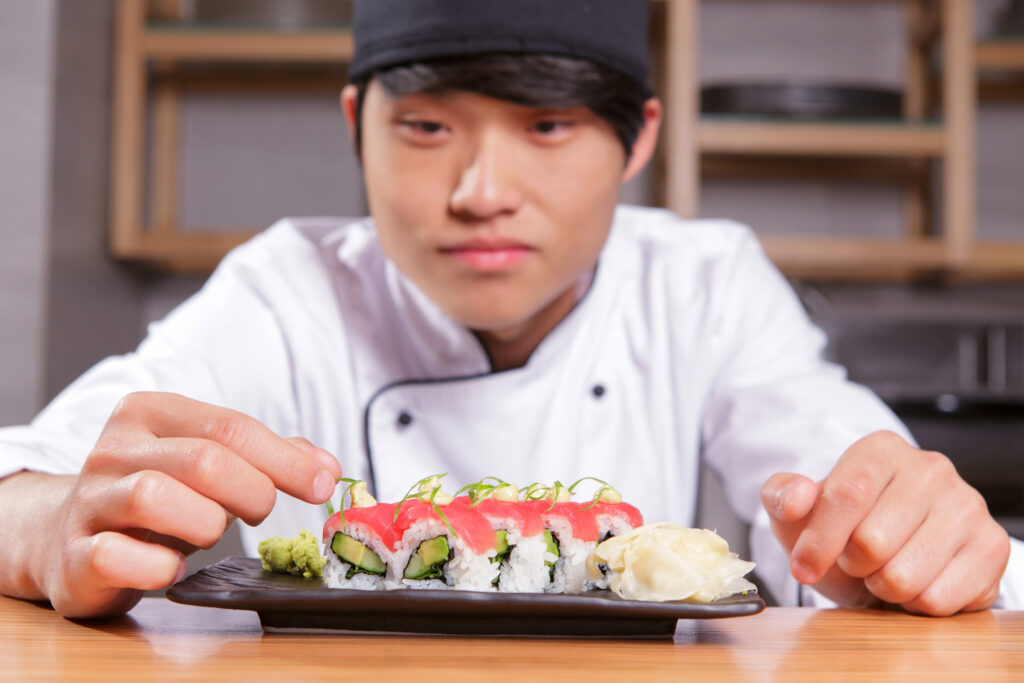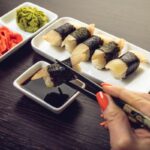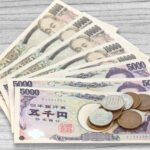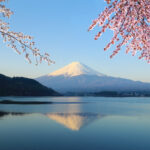Dining at a restaurant or visiting a bar that’s new to you can be exciting, but it can also be nerve-wracking—especially if you’re an indecisive person. Many times, it’s easiest to communicate your preferences to the waitstaff, and let them choose a meal or drink that works best for your palate. In short, you’re leaving things up to the experts. It’s a great way to expose yourself to something new in a controlled, conscientious way.
In Japan, this concept is called omakase, and if you plan on visiting the country, it’s something you’ll want to explore. It’s applicable for everything from food to fashion, and it involves having an open mind to trying new things. In essence, you’re putting your experience in the hands of someone else, with the confidence that they’ll make it one that’s unique, exciting and memorable.
Here’s everything you need to know about Japan’s unique system of omakase, and how letting yourself enjoy the selection of someone else can lead to a genuinely good experience.

The definition of omakase
Omakase is a Japanese concept or system where patrons or customers—typically of a bar, restaurant, shop or other establishment—leaves the details of an order to the shop. Loosely translated, it means “It’s up to you.” It’s typically a response you can offer up when faced with decisions that you’re either unsure about, or split indecisively between.
Omakase has several loose, general meanings, but it essentially means respectfully letting another (i.e., an expert like a chef, sommelier, bartender, etc.) decide what is best. You’re relying on their expertise to serve you what they think is best. Whether you don’t know or aren’t sure, you’re choosing to leave your decision to someone else in the hopes that they will create the best possible experience for you—or, at the very least, a memorable one!
The history of omakase
Japan is a country steeped in longstanding tradition, so it’s easy to think the concept of omakase is also rooted in ancient practices. Surprisingly, it’s not! It may come as a surprise that the system is a fairly new tradition.
Omakase originated in sushi restaurants in the 1990s. Before that time, there was often a high barrier to entry when it came to sushi restaurants. Not only were they relatively pricey, they often only catered to gourmands who had a full understanding of the ins and outs of fish. Usually, diners enjoyed their meal without drinking alcohol, but all this changed as Japan’s population became more and more affluent.
Japan’s bubble economy in the 90s led to sudden affluence—and these newly wealthy people were hungry for sushi. These newcomers were relatively unfamiliar with sushi’s “high culture,” but that didn’t stop them from dining at sushi restaurants across the country. Sushi culture changed to meet the demand.
To help newcomers save face as they dined in sushi restaurants, chefs and waitstaff introduced the concept of omakase. Now, diners didn’t need to know a particular fish name, or when certain fish were in season. It made things easier on diners, and on chefs, too. In many ways, omakase bridged the gap between uncertainty and experience, and it quickly spread beyond sushi to become a cultural bridge.
Today, omakase is popular in many situations that have a veil of uncertainty around them. If you’re posed with a question that involves options, invoking omakase is a great way to dive in head-first with little-to-no knowledge of the options themselves—be it food, drink, fashion and more.
The appeal of omakase
Many Japanese people love the concept of omakase, and it can take on a life of its own in certain situations. It’s also highly popular among tourists and expats who are new to the country. Not only does it come with the small thrill of letting someone else dictate your decision, there are several other perks that make omakase appealing.
- Less effort. Have trouble deciding what you want, even at your favorite restaurant? Omakase requires less thinking and decision-making. It’s simply more convenient to leave decisions up to the staff, so omakase is perfect for indecisive people. if you agonize over every option or are prone to “paralysis by analysis,” omakase can remove the biggest barrier to a positive experience by simply taking the burden of decision-making off your plate.
- Save face. Unless you’re an experienced gourmand, it can be daunting to order at nice restaurants. For instance, do you know what dishes to order in an upscale sushi restaurant? Or do you know the best wines to order in a fine French restaurant? Instead of making a mistake, it’s easier to order omakase and defer to the expertise of the staff. This has the added benefit of showing that you trust others to make a great decision on your behalf.
- Professional opinion. Many wait staff use omakase as a way to showcase their knowledge. Restaurant and shop-owners know their product best, so why not rely on their professional opinions? While you can ask for a recommendation, or osusume, it’s easier to leave the entire choice up to the knowledgeable staff. They can also come up with ideal pairings of food and drinks for you. This is common knowledge in Japan, and the Japanese people are happy to leave things up to the pros.
These aren’t the only reasons people love omakase. For some, it’s a thrill; for others, it’s a way to break out of their comfort zone. Whatever the reason, omakase is often seen as the perfect way to inject a little excitement into what might otherwise be a routine experience.
Omakase for food and drink
The concept of omakase is most popular in restaurants and bars, especially at sushi restaurants. This is, after all, where it originated.
Sushi
When you dine at a fine sushi restaurant in Japan, it can be daunting to order if you’re not well-versed at what pairs well with what, as well as what’s currently in season. When you order omakase at sushi restaurants, you often get a blend of expensive and inexpensive seasonal fish, so you get a great-tasting, filling course at a great price. You can trust Japanese sushi chefs to make great choices—they’re masters at their craft, and they pick out fresh selections at fish markets each day. At some sushi restaurants, there’s no menu at all, which makes omakase especially handy.
Restaurants
You can also find omakase lunches at restaurants throughout Japan. At many restaurants, regulars come in and order without seeing the menu. Feel free to let the staff surprise you with a delicious dish—you never know what you’ll be able to try! Let the professionals make the decisions for you, but always be sure to confirm ingredients and share any allergies with the staff beforehand.
Bars
Omakase is also popular when it comes to wine and liquor. If you’re at a restaurant and need a wine that pairs well with your meal—and fits your budget—ask the staff to omakase, and they’ll pick the best wine for you. You can also use omakase at bars, making general orders suggestions if you’re in the mood for something sweet, tart, dry or any other attribute. If you’re just unsure of what to have, request omakase and let the bartender work their magic.
Omakase for fashion and style
Omakase is even popular in fashion. In recent years, omakase fashion services have been popping up all over Japan. Some of Japan’s most famous fashion internet sites even offer omakase services, sending customers coordinated outfits that match their style, budget and taste. You’re usually required to fill out a questionnaire with your preferences, then stylists pick outfits to match. This service is great for people who don’t have the time to shop, as well as those who could use a little expertise in terms of fashion sense.
It’s important to note that omakase doesn’t typically apply to fashion boutiques or shopping centers—unless advertised. The difference comes from a service standpoint. Whereas a sushi chef or bartender is a master of their craft who’s excited to guide your experience, someone working at a retail clothing store doesn’t necessarily have the connection to the clothes—unless, of course, they made them!
Are you ready to try something new and unknown?
The Japanese omakase system is unique, fun and exciting—for both tourists and locals alike. If you’re visiting Japan and you choose to go omakase in a restaurant, bar, boutique or anywhere else, it’s simply polite to leave everything up to the professional. You’re bound to have an experience that reflects the uniqueness of the situation.
Keep in mind that omakase is a practice that’s rooted in respect. If you’re not a fan of what’s served, it’s okay to politely ask the expert to “revisit” the experience. They will often gladly take you in a different direction, and may even ask about your preferences. Note that you’re expected to pay for anything you order omakase—even things you didn’t enjoy or sent back.
Now that you know the basics of this unique ordering method, go out and enjoy the adventure of omakase!
- How Much Money Can You Make Teaching English in Japan? - December 12, 2022
- The Best Places to Teach English in Japan - December 9, 2022
- The Best Credentials for Teaching English in Japan - December 8, 2022








